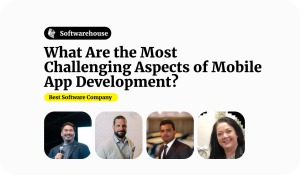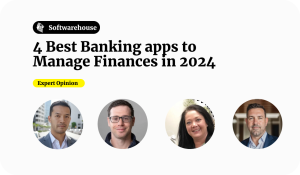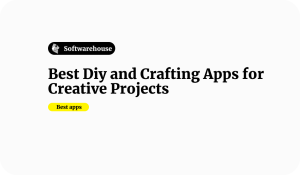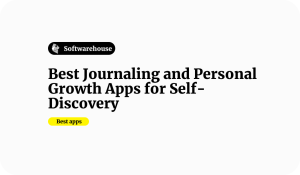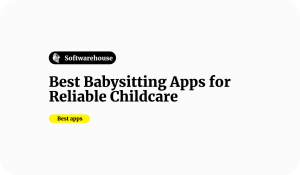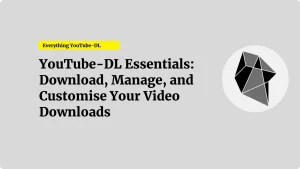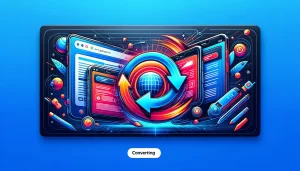Understanding the Mobile App Market
In today’s digital world, mobile apps have transformed from simple conveniences to essential tools for businesses and individuals alike. Whether it’s enhancing productivity, providing entertainment, or driving e-commerce, apps have become indispensable for reaching customers, streamlining operations, and even defining entire business models. According to Statista, there were over 230 billion mobile app downloads worldwide in 2022 alone, and this figure is expected to keep rising. The message is clear: mobile apps are no longer just a luxury—they’re a necessity for businesses wanting to stay relevant.
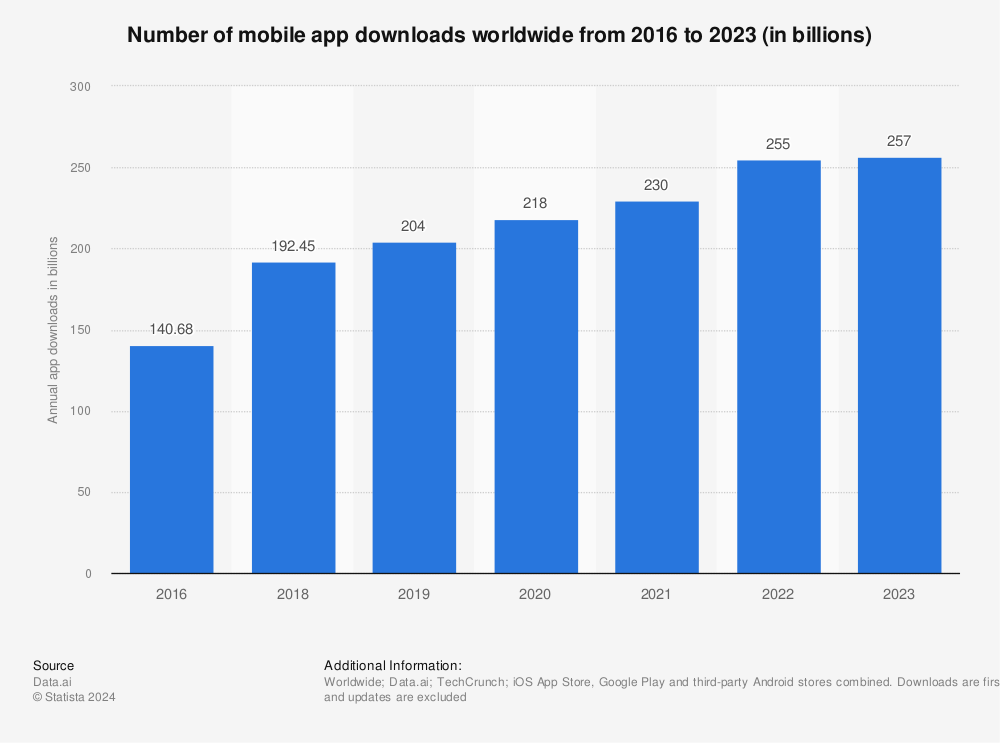
Find more statistics at Statista
But, developing a successful mobile app isn’t as easy as writing a few lines of code and pushing it to an app store. For every app that becomes a hit, there are hundreds, if not thousands, that fall into obscurity, never quite finding their audience. The reason often lies in a lack of strategy and structure. Many aspiring app creators dive into the process without a well-thought-out plan, which leads to budget overruns, missed deadlines, and products that don’t meet user expectations.
A structured approach to mobile app development is crucial for navigating this highly competitive space. From ideation to post-launch maintenance, every step in the process has a role to play in ensuring the app’s success. Each phase of development is interconnected, and skipping or neglecting even one could derail your app’s journey. That’s why it’s essential to break down the entire process into manageable steps, where you can focus on delivering quality at each stage.
This guide will take you through ten critical steps that form the foundation of a successful mobile app, from initial concept and design to deployment and maintenance. These steps are designed to help you avoid common pitfalls and ensure that every aspect of your app’s creation is deliberate and aligned with your end goals. Whether you’re a seasoned developer or a business owner new to the world of app development, this comprehensive guide will walk you through every stage of building an app that stands out, scales, and delivers value to users.
With that, let’s dive into the ten essential steps for creating a successful mobile app.
- Step 1: Ideation and Market Research – The foundation of your app starts with identifying a real problem and validating your idea through market research.
- Step 2: Defining App Goals and Objectives – Setting clear, measurable goals ensures that every decision in development aligns with your business vision.
- Step 3: Target Audience Analysis – Understanding your users’ needs and behaviours is essential for creating an app that resonates with them.
- Step 4: App Feature Definition and Prioritization – Distinguishing between must-have and nice-to-have features helps you focus on delivering a strong MVP.
- Step 5: Choosing the Right Technology Stack – Selecting the right platforms, frameworks, and tools ensures your app is scalable, secure, and high-performing.
- Step 6: App Design and User Experience (UX/UI) – Crafting an intuitive, user-friendly design is crucial for driving user engagement and retention.
- Step 7: Development and Testing – Building your app with robust development practices and continuous testing ensures functionality and quality.
- Step 8: Pre-launch Marketing and App Store Optimization (ASO) – A strategic marketing plan and optimized app store presence build excitement and ensure your app is discoverable.
- Step 9: Launch and Post-launch Strategies – A well-executed launch with ongoing user engagement and feedback ensures momentum post-launch.
- Step 10: App Maintenance and Updates – Continuous updates, security improvements, and feature enhancements keep your app relevant and growing over time.
Step 1: Ideation and Market Research

The foundation of any successful mobile app lies in its idea—more specifically, in solving a real problem that users face. While it may be tempting to chase trends or build an app around an interesting concept, the most successful apps emerge from a deep understanding of user pain points and gaps in the market. This is where the ideation and market research phase comes in.
Understanding User Pain Points
Before you write a single line of code, it’s critical to ask yourself: what problem does my app solve? If your app doesn’t offer a solution to a genuine issue or significantly improve an existing process, it risks being overlooked. Identifying and addressing real user pain points is the key to creating an app that people will actually want to download and use.
Start by placing yourself in the shoes of your target audience. What everyday challenges do they encounter that your app could help solve? For instance, if you’re developing a productivity app, think about the frustrations people have with time management or task organisation. If it’s an e-commerce app, consider how you can make the shopping experience smoother or more personalised. Deeply understanding these pain points will give your app purpose and direction.
Researching Competitors and Existing Solutions

Once you have a rough idea of the problem you’re aiming to solve, the next step is to conduct thorough research on the current market landscape. No app exists in a vacuum. Regardless of how unique you believe your idea is, there will likely be similar apps or solutions available. This is a good thing—it shows there’s demand for your idea—but it also means you’ll need to find ways to differentiate your app from the competition.
Begin by identifying the main players in your app’s niche. Download these apps, explore their features, and read user reviews to understand what people like and dislike about them. By doing this, you’ll uncover gaps that your app can address. Maybe the user interface of a popular app is clunky, or there’s a feature that users are consistently requesting but isn’t being offered. Take these insights and think about how you can improve on existing solutions, either by offering a more intuitive user experience, a broader set of features, or by targeting a specific niche that other apps are neglecting.
Validating Your Idea with Surveys or Focus Groups

Having a solid app idea backed by competitive research is a good start, but it’s not enough. To truly ensure there’s market demand for your concept, you need to validate it with real potential users. This is where surveys, interviews, and focus groups come into play.
Start by creating a simple survey to gather insights on whether people face the problem you’re trying to solve, how they currently handle it, and whether they’d be interested in your proposed solution. Social media, email lists, or online communities can be great places to distribute these surveys and gather feedback.
Another effective method is hosting focus groups where you can dive deeper into people’s pain points and discuss potential solutions. Not only does this provide validation for your idea, but it also helps refine your app concept based on actual user input. This stage is crucial for saving time and resources later, as it ensures you’re building something that users want.
Outcome: A Well-Defined App Concept with Market Demand
By the end of the ideation and market research phase, you should have a crystal-clear idea of what your app will do, who it will serve, and why it’s needed. Armed with feedback from potential users and insights from competitor analysis, you can confidently move forward, knowing that your app has a strong foundation. A well-defined concept that addresses a real problem and has market demand will give you the clarity and focus necessary to succeed in the next stages of development.
The ideation and market research phase is often the most critical, as it sets the direction for your entire project. Skipping or rushing through this step can result in an app that lacks purpose or fails to resonate with users, so take the time to get it right. With a validated idea in hand, you’re now ready to move on to the next phase: planning and defining the app’s core features.
Step 2: Defining App Goals and Objectives
After solidifying your app idea through research and validation, the next critical step is to define clear goals and objectives. Many developers and entrepreneurs dive into app development with only a vague sense of what they want to achieve. However, without a clear direction, it’s easy to get off track, wasting time, money, and effort on features or marketing strategies that don’t drive meaningful outcomes.
Defining concrete goals for your app provides clarity, keeps your team aligned, and ensures that you stay focused on creating a product that delivers real value—not just to users, but to your business as well. This stage is about creating a roadmap for success, which you’ll use to guide decisions throughout development, launch, and beyond.
Aligning App Objectives with Business Goals
Your app isn’t just a product—it’s an extension of your business, and as such, its goals should be tightly aligned with your broader business objectives. Whether you’re developing an app to improve customer engagement, create a new revenue stream, or enhance brand awareness, it’s essential to ask: how will this app contribute to the overall success of the company?
For example, if your business goal is to increase customer retention, your app’s objective might be to offer seamless loyalty program integration or provide personalised content that keeps users engaged. On the other hand, if you’re launching a new startup, the app might be the core offering, and your objectives will be centered on driving user acquisition and building brand recognition.
Clearly defining the role of the app within your business strategy helps you avoid building features or implementing marketing efforts that don’t serve a larger purpose. It also ensures that you have the buy-in of key stakeholders who understand how the app supports the broader business vision.
Defining Success Metrics
Once you’ve aligned your app objectives with business goals, the next step is to establish measurable success metrics, also known as Key Performance Indicators (KPIs). KPIs provide a tangible way to assess whether your app is meeting its objectives and achieving the desired outcomes.
Depending on the nature of your app and its objectives, success can be measured in a variety of ways. Below are some common KPIs to consider:
- Downloads: This is one of the most basic indicators of an app’s success. However, it’s not enough to focus solely on the number of downloads, as it doesn’t necessarily reflect user engagement or retention.
- Active Users: Tracking how many users are actively engaging with your app on a daily, weekly, or monthly basis can give you a better understanding of its relevance and stickiness. Daily active users (DAU) and monthly active users (MAU) are popular metrics for apps that rely on frequent user interaction.
- Retention Rate: A high download rate means little if users are abandoning the app after their first or second use. Retention rate measures how many users return to your app over a set period of time. A low retention rate might indicate issues with user experience or a lack of value provided by the app.
- Session Length and Frequency: Understanding how long users spend in your app and how frequently they return can help identify whether your app is meeting their needs. This is especially important for apps like social media platforms, games, or content-driven apps where user engagement is a key driver of success.
- Conversion Rate: For apps that are part of an e-commerce strategy or have in-app purchases, tracking conversion rate (the percentage of users who take a desired action, such as making a purchase or signing up for a subscription) is critical for assessing revenue generation.
- Customer Lifetime Value (CLTV): This metric estimates the total value a user will bring to your app over their lifetime as a customer. High CLTV can justify the cost of user acquisition and demonstrate the long-term value of your app.
- Revenue Generation: Ultimately, many apps are designed to generate revenue, whether through direct sales, subscriptions, in-app purchases, or advertising. Tracking your app’s revenue performance over time is crucial to ensuring that it is financially viable and contributes to your business’s bottom line.
By defining your KPIs early on, you can set clear benchmarks for success and build features and marketing strategies that directly support those goals. Having these metrics in place also allows for continuous monitoring and optimisation as the app evolves, helping you make informed decisions throughout its lifecycle.
Outcome: A Set of Clear, Measurable App Objectives

By the end of this step, you should have a set of well-defined, measurable goals for your app. These goals will serve as a guiding light throughout the entire development process, ensuring that you stay focused on delivering value for both your users and your business. Additionally, with measurable KPIs in place, you’ll have the tools necessary to assess your app’s performance post-launch and make data-driven decisions to enhance its success.
Clearly defined objectives not only keep your team aligned and motivated, but they also provide a framework for future growth and scalability. With your goals and KPIs firmly established, you can confidently move into the next phase of the mobile app development process: planning and designing the app’s features and user experience.
Step 3: Target Audience Analysis
One of the most critical steps in building a successful mobile app is understanding the people who will actually use it. An app designed for everyone often ends up resonating with no one. To truly stand out in a competitive market, you must have a clear, detailed understanding of your target audience—who they are, what they need, and how they behave. This step is about tailoring your app experience to meet the specific demands of your audience, ensuring that your product solves their problems in a meaningful way.
Identifying Your Ideal User Persona
The first step in audience analysis is creating a detailed user persona. A user persona is a semi-fictional representation of your ideal app user based on real data about demographics, behaviours, preferences, and pain points. It helps you step into the shoes of your future users and design an app that caters specifically to their needs.
To build a comprehensive user persona, you’ll want to gather insights on several key areas:
- Demographics: This includes information such as age, gender, occupation, location, and income level. Understanding these factors can influence everything from your app’s design to its marketing approach. For instance, an app aimed at young professionals in urban areas might prioritise sleek, modern design and easy navigation, while an app targeting senior users might focus on simplicity and larger fonts.
- Behaviors and Habits: Dig into how your potential users currently interact with technology. Are they heavy mobile users, or do they prefer desktop experiences? Do they spend a lot of time in certain types of apps (e.g., social media, productivity tools, games), and if so, what keeps them engaged? Understanding these behaviours will help you design features that align with their habits.
- Preferences and Interests: What drives your audience? Are they motivated by convenience, entertainment, or learning opportunities? Knowing their interests allows you to position your app in a way that feels personally relevant to them. For example, if your target users value privacy, emphasising your app’s security features could be a key selling point.
By developing detailed user personas, you ensure that every design decision—from the layout to the features—is focused on delivering value to the people who matter most: your users.
Conducting Interviews or Surveys to Understand User Needs

While building personas based on general research is helpful, nothing beats direct insights from potential users. Conducting interviews, surveys, or even focus groups can provide you with invaluable feedback that shapes the direction of your app.
When engaging with potential users, focus on understanding their problems, frustrations, and desires. Ask open-ended questions that encourage them to share their thoughts about existing apps in the market, what they love, what they dislike, and what improvements they would welcome. For example:
- What are your current pain points in solving [specific problem]?
- How do you currently manage or address [specific need]?
- What features would you want in an app designed to solve [problem]?
- Which apps do you use most often and why?
The goal here is to identify patterns and trends in the answers you receive. These insights will help you refine your app’s core features to meet real user demands. You might even uncover pain points that you hadn’t considered before, giving you a unique advantage over competitors by addressing unmet needs.
Tailoring the App Experience for Different User Segments
Not all users are the same, even within your target audience. For instance, your app might appeal to both beginners and experienced users, or it might cater to multiple age groups. The challenge is to create an app experience that feels personalised and relevant to each user segment without diluting the core value proposition.
One strategy is to prioritise certain features for different user segments based on their needs. For instance, if you’re developing a fitness app, one segment of users may be looking for structured workout plans, while another segment may be interested in tracking specific health metrics. Offering customisable or adaptive user experiences, where users can choose what features are most important to them, can help you cater to a broader audience without compromising on usability.
Additionally, consider segmenting your marketing efforts based on the unique preferences of each audience group. Tailoring your in-app messaging, notifications, and user onboarding process can also help ensure that different segments feel equally catered to, increasing overall engagement and retention.
Outcome: A Clear Understanding of the Target Audience and Their Needs
By the end of the target audience analysis phase, you should have a detailed, data-driven understanding of who your users are, what their pain points are, and how your app can solve their problems. This clarity allows you to create an app that resonates with users on a personal level, increasing the likelihood that they’ll not only download your app but also keep coming back.
Having this solid understanding of your audience lays the groundwork for making informed decisions in the design, development, and marketing stages of your app. With your user personas and their needs clearly defined, you’re now ready to move forward with designing an app experience that delights users and stands out in the marketplace.
Next, we’ll explore how to take these insights and translate them into actionable steps in the app’s feature design and user experience planning.
Step 4: App Feature Definition and Prioritisation
After understanding your target audience and their needs, the next step is to define the features that will bring your app to life. Every successful mobile app starts with a clear list of features that directly address user pain points, while also aligning with your business objectives. However, it’s easy to get carried away and overload your app with too many features, which can lead to scope creep, increased development costs, and a confusing user experience. This step is about listing, refining, and prioritising features so that your app delivers maximum value, particularly in its first version.
Differentiating Between Must-Have and Nice-to-Have Features
When planning your app, not every feature you think of should make it into the first version. It’s important to distinguish between must-have features, which are essential for your app’s functionality and appeal, and nice-to-have features, which can be added later as part of future updates.
- Must-Have Features: These are the core functionalities your app needs to meet user expectations and solve the primary problem it was designed for. Without these, your app would fail to deliver its core value. For example, if you’re building a fitness tracking app, core features would include activity tracking, goal setting, and progress monitoring. These features address the fundamental user needs and ensure the app is functional from day one.
- Nice-to-Have Features: These are additional enhancements that can improve the user experience but aren’t necessary for the app’s initial release. They could include social sharing options, advanced customisation, or aesthetic changes that make the app more appealing but don’t necessarily impact its functionality. While these features can differentiate your app in the long run, they should be left for future updates, after your core app is in the hands of users.
By focusing on must-have features for the initial version, you simplify the development process, get your app to market faster, and reduce the risk of overloading users with unnecessary functionality.
Using Techniques Like MoSCoW (Must have, Should have, Could have, Won’t have)
One of the most effective methods for feature prioritisation is the MoSCoW technique. This framework helps you break down features into four categories based on their importance to your app’s success:
- Must have: Features that are non-negotiable and critical to your app’s core functionality. Without these, the app wouldn’t solve the problem it was created for. These are your top priority and should be the first to be developed.
- Should have: Features that are important but not essential for the first version. They add significant value but can be postponed to future updates if necessary. These features come second in your priority list.
- Could have: These are features that would be nice to include but aren’t crucial to the app’s success. If time and budget allow, you can add these in later versions. However, they aren’t likely to impact initial user adoption significantly.
- Won’t have: Features that won’t be included in the current development phase. These might be ideas that are interesting but don’t align with your current goals, or they could be saved for future iterations when your app is more established.
Applying the MoSCoW method ensures that your feature list is focused, manageable, and aligned with your business goals and user needs. It also helps keep your development team on track by clearly defining which features to prioritise for the Minimum Viable Product (MVP).
Building a Minimum Viable Product (MVP) for Quick Market Entry

The MVP approach is an essential strategy in mobile app development, particularly for startups or businesses looking to test the waters before committing to a full-scale product. The idea behind the MVP is to launch a version of your app with just enough functionality to satisfy early adopters and gather user feedback.
Why an MVP? Launching with a minimal but functional set of features allows you to:
- Test the Market Early: An MVP lets you validate your app idea with real users before investing in more complex features. You can gather valuable feedback and insights into how users interact with the app, what they like, and what they find frustrating. This helps you make data-driven decisions about which features to build next.
- Minimise Development Costs: By focusing only on the core functionalities, you reduce the time and cost involved in the initial development process. This allows you to enter the market quicker, with fewer resources.
- Iterate Based on Feedback: Launching with an MVP enables you to quickly iterate on the product based on user feedback, rather than spending months developing a feature-rich app only to find that it misses the mark. You can adapt the app’s roadmap based on real-world data, which increases the likelihood of building something users truly want.
For example, if you’re developing a food delivery app, your MVP might focus solely on order placement, payment integration, and delivery tracking. While features like personalised restaurant recommendations or loyalty programs would be valuable, they aren’t essential to your app’s core purpose in the early stages. By focusing on just the critical features, you can get your app to market quickly and begin gathering valuable user data to inform future development.
Outcome: A Concise List of Core App Features
By the end of this step, you’ll have a concise, prioritised list of features that will make up the first version of your app. This list should include only the essential functionalities that solve the key problems of your target audience while aligning with your business goals. Additional features, while important, can be left for future updates once your app has gained traction.
With a clear feature set in hand, you’re now ready to move into the design and development phases with a focused plan that avoids unnecessary complexity and ensures a smooth user experience. The next step is to translate these features into an intuitive, user-friendly design that enhances your app’s usability and appeal.
Step 5: Choosing the Right Technology Stack
Once you have defined and prioritised your app’s features, it’s time to select the technology stack that will power your app. The technology stack refers to the set of tools, programming languages, frameworks, and technologies used to develop both the front end (what users see and interact with) and back-end (the server-side logic and infrastructure) of the app. The choice of tech stack directly impacts the performance, scalability, security, and long-term viability of your app, so it’s crucial to get this right from the start.
Selecting the right technology stack involves several key considerations, including whether to develop your app natively or use cross-platform frameworks, how to handle backend infrastructure, and ensuring the app is built with scalability and security in mind.
Native vs Hybrid App Development

One of the first decisions to make is whether to build your app natively for each platform (iOS and Android) or to use a cross-platform solution. Both approaches have their advantages and trade-offs, so the choice will depend on your app’s specific needs, budget, and target audience.
- Native App Development: Native apps are developed specifically for a single platform, either iOS or Android, using platform-specific programming languages (Swift or Objective-C for iOS, and Kotlin or Java for Android). Native development allows you to leverage the full capabilities of the operating system and hardware, resulting in better performance, smoother user experience, and access to native features such as GPS, camera, and push notifications.
- Pros: Superior performance, better user experience, access to native APIs, higher app store rankings, and smoother animations.
- Cons: Higher development cost and time because you need to build separate apps for iOS and Android, which may double your effort if you’re targeting both platforms.
- Hybrid/Cross-Platform Development: Hybrid apps are built using frameworks like React Native or Flutter, which allow you to write code once and deploy it across both iOS and Android platforms. These frameworks bridge the gap between native and web development by allowing developers to build apps that work on multiple platforms with a single codebase.
- React Native: Developed by Facebook, React Native uses JavaScript and React to build mobile apps. It provides near-native performance and a strong developer ecosystem, making it a popular choice for cross-platform development.
- Flutter: Developed by Google, Flutter uses the Dart programming language and offers rich UI components that enable developers to create beautiful, high-performance apps for both platforms.
- Pros: Faster development time, reduced cost (one codebase for both platforms), access to a large developer community, and near-native performance in many cases.
- Cons: While performance is often good, it may not match that of native apps for highly complex applications. You may also face challenges with accessing some platform-specific APIs or features.
When to choose native: If your app relies on intensive processing, complex animations, or high-performance needs—such as gaming or graphics-heavy apps—it’s worth considering native development to ensure the best possible experience.
When to choose cross-platform: If your app is more straightforward and you need to quickly reach users on both iOS and Android without significant investment in separate codebases, cross-platform frameworks like React Native or Flutter are solid choices.
Backend Technology Choices (Cloud, Databases)
The backend of your app is equally important as it handles essential tasks like data storage, authentication, and communication between the user interface and servers. Your choice of backend technologies should be determined by the complexity of your app, its need for scalability, and how much real-time data processing is required.
- Cloud-Based Backend Solutions: Many apps today use cloud-based solutions like AWS (Amazon Web Services), Google Cloud, or Microsoft Azure. Cloud platforms offer the advantage of scalability, meaning your app can handle increased user loads as it grows without needing to worry about physical server management. These platforms also offer integrated services like databases, machine learning, and security protocols.
- Pros: Scalability, flexibility, and cost-effectiveness. Cloud platforms allow you to pay only for the resources you use, making it ideal for startups or businesses with fluctuating needs.
- Cons: The reliance on third-party services means potential risks regarding outages or compliance with specific data regulations, so it’s essential to choose a reliable provider.
- Databases: Your choice of database will impact how efficiently your app stores and retrieves data. You can opt for relational databases like MySQL or PostgreSQL if your app requires complex queries and transactional consistency. Alternatively, for apps that handle large amounts of unstructured data (such as social media platforms or chat applications), NoSQL databases like MongoDB or Firebase might be more appropriate.
- Relational Databases (SQL): Ideal for apps that need structured data and transactional accuracy, such as e-commerce or financial apps.
- NoSQL Databases: Designed for scalability and flexibility, ideal for handling large volumes of unstructured or semi-structured data.
Scalability and Security Considerations
Two of the most critical factors to consider when choosing a technology stack are scalability and security. A poorly chosen stack may work well for a few hundred users but could falter as the user base grows, resulting in slow performance or crashes.
- Scalability: Ensure that the technologies you select can grow with your app. For instance, cloud-based backend solutions offer auto-scaling features, meaning they can adjust the resources allocated to your app based on user demand. Similarly, choosing the right database can impact how your app handles an increasing amount of data. Opt for technologies that are known for high performance at scale, especially if you anticipate rapid growth.
- Security: Mobile apps, especially those handling sensitive user data such as financial or personal information, must prioritise security from the start. When selecting your technology stack, look for frameworks and platforms that offer built-in security features, such as encryption, secure data storage, and robust authentication methods. This is particularly important if your app will be dealing with sensitive data like payment information or personal health data.
Additionally, consider compliance with data protection laws such as GDPR (General Data Protection Regulation) in Europe or CCPA (California Consumer Privacy Act) in the U.S., ensuring that your app adheres to regulations that may affect your users.
Outcome: A Technology Stack That Aligns with App Requirements and Future Scalability
By the end of this step, you should have a well-considered technology stack that suits both your immediate app requirements and long-term scalability. Whether you choose native development for performance, cross-platform development for efficiency, or cloud-based backend solutions for scalability, your decisions will directly influence how quickly and successfully your app can grow.
With the right tools and technologies in place, you can now move into the design and development phase, confident that your app will perform well, scale as needed, and offer a secure, high-quality user experience. The next steps in the development process will involve translating these technological decisions into tangible development practices, where your app takes shape both visually and functionally.
Step 6: App Design and User Experience (UX/UI)

Design is one of the most influential factors in determining the success of a mobile app. No matter how innovative your idea is or how well you’ve built your backend, if the app doesn’t provide a seamless, engaging, and intuitive user experience, it’s likely to fail. App design isn’t just about making an app look pretty—it’s about ensuring that users can easily navigate and interact with the app to achieve their goals.
In this step, we focus on how the user experience (UX) and user interface (UI) are crafted, from initial wireframes to testing designs with real users. A well-designed app creates positive experiences, builds loyalty, and encourages repeat use, making it crucial to the app’s overall success.
Importance of Wireframing and Prototyping
Before jumping into the actual design, it’s essential to start with wireframes and prototypes. These are the blueprint stages of app design, allowing you to map out the structure, layout, and flow of the app before committing to a final design.
- Wireframing: Wireframes are low-fidelity sketches that outline the app’s interface and navigation flow. Think of them as the skeletal framework of your app. At this stage, you’re not concerned with colors, fonts, or images, but rather with how the user will move through the app and interact with key features. Wireframing helps identify potential usability issues early on and ensures that the app’s navigation is logical and intuitive. Tools like Figma, Sketch, or Adobe XD can be used to create wireframes quickly and efficiently.
- Prototyping: Once wireframes are completed, the next step is to create a prototype—a more interactive, high-fidelity version of the app design. Prototyping allows you to simulate how the app will function once fully built, helping you visualise how users will interact with the interface. Prototypes give stakeholders, designers, and developers a more accurate picture of the final product, making it easier to gather feedback and make adjustments before full development begins.
Both wireframing and prototyping are vital to ensuring that the app’s layout and flow are optimised for the best possible user experience. These processes help reduce costly design changes down the road and ensure that development starts on a solid foundation.
Design Principles: Simplicity, Accessibility, and Intuitiveness
A successful app is one that users can easily navigate without a steep learning curve. To achieve this, your app’s design should adhere to the following core principles:
- Simplicity: One of the most common reasons users abandon an app is because it feels cluttered or overly complicated. A simple design focuses on what’s necessary, stripping away any excess features or information that can distract or confuse users. Every element in your app should serve a clear purpose, whether it’s guiding the user through a specific action or helping them understand information quickly. Avoid overwhelming users with too many options or complex workflows—keep the design as streamlined and straightforward as possible.
- Accessibility: A great app is one that everyone can use, regardless of their abilities. When designing, consider accessibility features such as scalable text, high-contrast colour schemes, screen reader compatibility, and intuitive navigation for users with disabilities. Both iOS and Android offer built-in accessibility features, so make sure your app leverages these tools to reach a wider audience. Additionally, accessibility isn’t just about catering to disabilities—it includes ensuring the app works well across different devices, screen sizes, and orientations.
- Intuitiveness: Users should be able to navigate your app without needing extensive instructions. The interface should be intuitive, meaning that interactions feel natural, and users can easily figure out how to accomplish their goals. For instance, standard design patterns like swiping, tapping, and pinch-to-zoom should behave as expected. Consistent placement of buttons, icons, and navigational elements also contributes to an intuitive design. Familiarity with platform-specific guidelines (like Apple’s Human Interface Guidelines or Google’s Material Design) can help you design an app that feels natural to users on both iOS and Android.
Testing Designs with Real Users to Gather Feedback
Designing in isolation without user feedback is a recipe for failure. Even the most experienced designers can’t predict every potential issue or user preference, which is why user testing is an essential part of the design process. Gathering feedback from real users ensures that your app design is user-friendly, functional, and enjoyable.
Here are some key methods for testing your app design:
- Usability Testing: This involves putting a prototype of your app in the hands of real users and observing how they interact with it. During usability tests, you can gather valuable insights on how users navigate your app, what they find confusing or difficult, and where the design may fall short in delivering a smooth experience. Watching users interact with the app often reveals issues that weren’t apparent during the design phase.
- A/B Testing: If you’re deciding between different design elements (for example, two types of navigation bars or colour schemes), A/B testing allows you to present each version to a subset of users and measure which performs better in terms of engagement, usability, or conversion rates.
- Surveys and Feedback: After testing your app with users, follow up with surveys to gather qualitative feedback. Ask users what they liked, what they didn’t, and how the app could be improved. This direct input from potential users helps guide final design adjustments.
Iterative design is key here—based on the feedback you receive, you should refine and optimise your app’s design until it meets both user expectations and your goals. This user-centred approach not only improves the overall design but also reduces the risk of releasing a product that frustrates or alienates users.
Outcome: A User-Friendly, Visually Appealing App Design
By the end of the design and user experience phase, you’ll have a visually appealing, functional, and user-friendly app design. Through careful wireframing, prototyping, and testing, you will have created an interface that feels intuitive, looks great, and aligns with the needs of your target audience.
A well-designed app not only improves user satisfaction but also boosts engagement and retention rates, helping your app stand out in an increasingly crowded marketplace. With the design finalised, you’re ready to move into the development phase, where these design elements will be translated into a working product.
In the next steps, we’ll explore how to turn your user-centric design into a fully functioning mobile app by following the best practices for development and deployment.
Step 7: Development and Testing
After finalising your app’s design, the next critical phase is development and testing—where the app truly comes to life. This is the phase where developers turn wireframes, prototypes, and design concepts into a functional product. However, building an app isn’t just about writing code; it requires a structured approach to development and rigorous testing to ensure that the final product works flawlessly and meets user expectations.
In this step, we’ll explore how to manage the development process, the importance of continuous testing, and how automated tools can enhance testing efficiency.
Agile vs. Waterfall Development
Before starting the development phase, it’s essential to choose the right development methodology. The two most common approaches are Agile and Waterfall, each with its advantages and disadvantages.
- Waterfall Development: Waterfall is a linear and sequential approach where each phase of the development process must be completed before moving on to the next. For example, once all the planning and design are finished, developers begin coding the app, followed by testing, deployment, and maintenance.
- Pros: Clear structure and defined milestones make it easy to track progress. It works well for projects where requirements are unlikely to change.
- Cons: Any changes or issues that arise later in the project can be expensive and time-consuming to fix, as it’s difficult to go back to previous stages once a phase is completed.
- Agile Development: Agile is a more flexible, iterative approach that breaks down the project into smaller cycles known as “sprints.” Each sprint typically lasts 1-2 weeks and focuses on completing a specific part of the app, which is then reviewed and tested before moving on to the next sprint. This approach allows for constant feedback, adjustments, and improvements throughout the development process.
- Pros: Flexibility to adapt to changes and user feedback, continuous improvement, and faster delivery of functional parts of the app. Agile also enables better collaboration between developers, designers, and stakeholders.
- Cons: Agile requires constant communication and may be challenging for teams not used to a fast-paced environment or for projects with strictly defined requirements from the outset.
When to use Agile: Agile is ideal for most mobile app development projects, especially when there is potential for changing requirements or the need for regular feedback from stakeholders and users.
When to use Waterfall: Waterfall is better suited to projects with well-defined requirements and little room for change, such as enterprise software development or regulatory-based apps.
Importance of Continuous Testing (Unit, Integration, User Testing)
Testing isn’t just something that happens at the end of development. In fact, continuous testing throughout the development process is crucial to ensure that your app functions as expected and delivers a high-quality user experience.
- Unit Testing: Unit testing focuses on testing individual components or functions of your app in isolation. Each unit (like a specific function or method) is tested independently to ensure that it works as intended. Unit tests are usually automated and run frequently during the development process. They help catch bugs early before they can cause issues in more complex parts of the app.
- Integration Testing: Once individual components are working correctly, integration testing ensures that different parts of the app work together as expected. This type of testing checks for issues in the interaction between different modules or external services, such as APIs or databases. Integration tests ensure that all the moving parts of the app come together seamlessly without any conflicts.
- User Testing: User testing, or beta testing, involves real users interacting with the app in real-world conditions. This type of testing helps identify usability issues, bugs, or performance bottlenecks that might not be apparent in a controlled development environment. User testing is vital for understanding how your target audience interacts with the app and whether it meets their expectations.
Using Test Automation Tools for Efficiency
While manual testing is necessary, especially for user experience and interface testing, automated testing tools can greatly improve efficiency and speed in catching bugs and errors early. Automation allows you to run tests quickly and frequently, ensuring that code changes don’t introduce new bugs or break existing functionality.
- Unit Test Automation: Tools like JUnit, NUnit, or XCTest (for iOS) allow developers to write tests that automatically verify the correctness of their code. These tests can be run frequently to ensure that individual components work as expected.
- Integration and Regression Testing Automation: Tools like Selenium, Appium, and TestComplete can automate end-to-end and regression tests, making sure that different parts of your app work together smoothly. They’re especially useful for testing complex workflows and ensuring that new code doesn’t break previously working features (regression testing).
- Performance Testing: Automated tools such as Apache JMeter or BlazeMeter can simulate high loads to test the app’s performance under stress. This is especially important for apps that anticipate a large number of users or those with real-time features like messaging or live streaming.
Automated testing saves time, ensures consistency in the testing process, and allows developers to focus on writing quality code without manually checking every small change. However, it’s important to balance automation with manual testing, particularly for areas that require human input, such as user interface and experience evaluation.
Outcome: A Fully Functional App That Has Undergone Multiple Rounds of Testing
By the end of the development and testing phase, you should have a fully functional app that has been rigorously tested for performance, security, usability, and compatibility. Continuous testing throughout development ensures that bugs are caught early, preventing costly fixes later on and resulting in a more stable app. With automated tools enhancing the speed and efficiency of testing, you can move through development cycles faster while maintaining high-quality standards.
This phase is where your app’s vision becomes a reality. With a working product in hand, the next step will be preparing for deployment and ensuring a smooth launch in the app store. In the following step, we’ll discuss how to prepare your app for launch, including app store optimisation (ASO), marketing, and post-launch support.
Step 8: Pre-Launch Marketing and App Store Optimisation (ASO)
As your app nears the final stages of development, it’s crucial to start thinking about how to build awareness and excitement for its launch. Pre-launch marketing and App Store Optimisation (ASO) play vital roles in ensuring that your app reaches your target audience, gains visibility, and stands out in the crowded app marketplaces. Marketing doesn’t start when your app is live—it should begin well in advance to create a buzz and position your app for success from day one.
This step will explore how to set up an effective pre-launch marketing strategy, optimise your app for app store visibility, and build a strong online presence through landing pages and promotional content.
Setting Up a Pre-Launch Marketing Strategy
Launching an app without a pre-launch marketing strategy is like opening a store in the middle of nowhere—no one will know it’s there. Pre-launch marketing helps generate excitement, build a community, and create anticipation among potential users before the app is even available for download.
- Social Media Campaigns: Start building your app’s presence on social media platforms like Instagram, Twitter, LinkedIn, and Facebook early in the development process. Create engaging content that showcases behind-the-scenes development updates, feature previews, and teaser videos to build anticipation. Use hashtags relevant to your app’s industry to increase visibility and consider collaborating with influencers or bloggers who can introduce your app to their followers.Run paid ads on these platforms, targeting specific demographics that match your user personas. Paid advertising can significantly boost your app’s visibility and help grow a following that’s eager for your app’s release.
- Email Campaigns: Create an email list where potential users can sign up to receive updates about the app’s progress and its release date. Email marketing is one of the most direct ways to communicate with your audience. Use email campaigns to share exclusive sneak peeks, early access to beta versions, or launch discounts. Platforms like Mailchimp or ConvertKit allow you to build, segment, and automate email campaigns that keep your audience engaged and excited about your app.
- Community Engagement: Engaging with online communities related to your app’s niche (such as Reddit, niche forums, or Facebook groups) can help generate word-of-mouth excitement. Participate in discussions, share valuable insights, and subtly introduce your app to people who are likely to be interested in your product.
Building an audience before launch ensures that you’ll have a pool of interested users ready to download your app as soon as it goes live.
Importance of App Store Optimisation (Keywords, App Description, Screenshots)
App Store Optimisation (ASO) is essential to ensure that your app is easily discoverable by users searching within app stores like Google Play or Apple’s App Store. Much like SEO for websites, ASO helps your app rank higher in app store search results, increasing the chances of downloads. Given the millions of apps available, having strong ASO practices is critical for visibility.
Key components of ASO include:
- Keywords: Thorough keyword research is crucial for improving your app’s discoverability. Identify the search terms that your target users are likely to use when looking for an app like yours. Tools like App Annie or Sensor Tower can help you analyze keyword trends and competition. Once you have a list of relevant keywords, integrate them naturally into your app’s title, subtitle, and description. For example, if your app is a fitness tracker, keywords like “workout”, “fitness”, “exercise”, and “health tracker” should be included in your app’s metadata.
- App Title and Subtitle: The title of your app is one of the most important ranking factors. It should be short, descriptive, and include your primary keyword. The subtitle gives you additional space to describe the app’s core value proposition in a compelling way, while also including relevant keywords.
- App Description: The app description is your opportunity to convince users to download your app. It should clearly outline what your app does, its key features, and the benefits users will get from it. Use concise, engaging language and include a call to action (e.g., “Download now to start your fitness journey!”). Use bullet points to highlight the most important features, making it easy for users to skim and understand the app’s value quickly.
- Screenshots and Videos: Visuals are a key factor in ASO. Your app’s screenshots and promotional videos should showcase the app’s interface, core features, and user experience. Focus on demonstrating how the app solves the user’s problem or improves their life. Choose screenshots that highlight your app’s best features and provide a clear picture of what users can expect. A short, engaging video can also significantly boost conversion rates by visually walking users through the app experience.
- Icon Design: Your app icon is the first thing users see, so it needs to stand out. Ensure your icon is simple yet distinctive, clearly representing your app’s purpose. Avoid cluttering it with too many elements, and make sure it’s visually appealing both in the app store and on the user’s home screen.
Building a Website or Landing Page for the App
In addition to your app store presence, having a dedicated website or landing page for your app is an effective way to build credibility, improve SEO, and capture early interest. A well-designed landing page serves as the central hub for all your pre-launch marketing efforts and provides potential users with more information about the app.
- Landing Page Content: Your landing page should clearly communicate your app’s core features and benefits. Use a catchy headline that conveys the app’s value proposition, followed by a concise explanation of how the app works and why users need it. Include visuals such as app screenshots, videos, and testimonials to reinforce your message. The goal is to convince visitors to either sign up for updates or download the app when it becomes available.
- Lead Generation: Use your landing page to build an email list by offering visitors the chance to subscribe for updates or early access. This is an excellent way to keep potential users engaged throughout the pre-launch period and inform them as soon as the app goes live.
- SEO for Landing Page: Make sure your website or landing page is optimised for search engines. Use the same keywords you identified for ASO in your web content to help your page rank higher in Google search results. This boosts your app’s visibility beyond the app stores, especially if users are searching for related terms on the web.
- App Download Links: Once your app is live, ensure that your website has direct download links for both iOS and Android, making it easy for users to download your app from the platform of their choice.
Outcome: A Well-Structured Marketing Strategy and App Store Presence
By the end of this step, you’ll have a comprehensive pre-launch marketing strategy in place, ready to generate excitement for your app’s release. With optimised app store listings, engaging promotional content, and a dedicated landing page, you’ll be well-positioned to capture your target audience’s attention and maximise downloads as soon as your app goes live.
Your app’s success depends not only on how well it functions but also on how effectively you market it to users. By building a solid foundation with pre-launch marketing and ASO, you’ll ensure a smooth, successful launch with the potential for sustained growth.
Next, we’ll dive into the final preparations for launching your app, including deployment strategies and monitoring post-launch performance.
Step 9: Launch and Post-Launch Strategies
With all the development, design, and pre-launch preparations complete, your app is finally ready for its debut. However, a successful launch goes far beyond simply making the app available for download. To ensure that your app makes a strong impact and gains traction quickly, you need a well-executed launch strategy and a solid plan for maintaining user engagement post-launch. This step covers how to create buzz around your app during launch, acquire users, and retain them through ongoing communication and continuous improvements.
Leveraging PR, Influencer Outreach, and Paid Ads for Launch
A strong launch requires multiple touchpoints, ensuring that your app gets in front of the right audience. Here’s how you can maximise exposure using a combination of PR, influencer marketing, and paid advertising:
- Public Relations (PR): Securing media coverage for your app is an excellent way to gain credibility and reach a broader audience. Start by reaching out to relevant tech publications, industry blogs, and online magazines that cover app launches or your specific app niche (e.g., fitness, finance, gaming). Craft a compelling press release that highlights your app’s unique value proposition, key features, and why it stands out in the market. If you can get your app featured on popular tech platforms like TechCrunch, Mashable, or Product Hunt, it can significantly boost visibility.
- Influencer Outreach: Influencers can play a crucial role in promoting your app to their followers, particularly if their audience matches your target demographic. Identify influencers or micro-influencers (those with a highly engaged, niche following) who are active in your industry or align with your app’s purpose. For example, if you’ve built a fitness app, collaborating with fitness influencers on Instagram or YouTube can help you reach an audience that’s already interested in similar products. Encourage influencers to review or demonstrate the app in action, creating authentic buzz around its launch.
- Paid Ads: Paid advertising on platforms like Google Ads, Facebook Ads, and Instagram can help you reach potential users quickly. These platforms allow you to target users based on demographics, interests, and behaviours, ensuring that your ads are seen by the right people. For example, if your app is focused on personal finance, you can target ads to individuals who have shown interest in money management, budgeting, or investing. Running app install campaigns can drive immediate downloads and increase app store rankings, which further boosts visibility. Consider running time-limited promotions or discounts during the launch to incentivise users to download the app immediately. You can also experiment with ad creatives, using engaging videos or interactive ads that show the app’s functionality in action.
Engaging Users Through Social Media, In-App Messaging, and Notifications
Once your app is live, keeping users engaged is key to driving retention and preventing churn. Here are some strategies to build and maintain user engagement:
- Social Media Engagement: Continue to engage your audience on social media platforms. Post user-generated content, app tutorials, feature highlights, and updates regularly to keep your community informed and excited. Encourage early users to share their experiences or reviews on social media, and consider running giveaways or referral programs that incentivise users to invite their friends to download the app.
- In-App Messaging: In-app messaging allows you to communicate directly with users while they’re using your app. You can use this channel to onboard new users, highlight key features, provide tips, or guide users through specific workflows. Personalised messages can improve user experience, helping them get more out of your app while reducing friction or confusion during their first interactions.
- Push Notifications: Well-crafted push notifications can keep your app top of mind for users. Use them to alert users about new features, updates, special offers, or relevant reminders. However, be mindful not to overuse push notifications, as this can lead to user annoyance and potential uninstalls. The key is to provide value—whether it’s a reminder about an incomplete task, a personalised offer, or an update that’s relevant to their interests.For example, a meditation app might send a push notification encouraging users to complete their daily meditation session, or a shopping app could alert users about a flash sale on items they’ve previously viewed.
Gathering User Feedback and Addressing Bugs or Issues Quickly
The post-launch period is critical for refining your app based on real-world user feedback. Even with thorough testing, users may encounter bugs, usability issues, or feature requests that you didn’t anticipate. Acting on this feedback quickly not only improves your app but also demonstrates that you’re responsive to your users’ needs.
- User Feedback Channels: Provide multiple avenues for users to share their thoughts, whether through in-app feedback forms, surveys, or customer support channels. Encourage users to leave reviews on app stores, and respond to reviews—especially negative ones—promptly. This shows that you’re listening and committed to resolving any issues they encounter.
- Bug Fixes and Updates: Be prepared to address bugs as they arise, especially in the first few weeks post-launch when user activity is highest. Regularly monitor app performance metrics, crash reports, and user reviews to identify areas that need immediate attention. Pushing out bug fixes quickly can prevent negative reviews from piling up, which can harm your app’s rating and visibility in the app store.
- Feature Improvements: In addition to fixing bugs, post-launch feedback will likely highlight features that users want improved or new features that they find valuable. Use this feedback to inform your app’s roadmap and prioritise updates that enhance the user experience.
Outcome: A Successful App Launch and a Plan for Post-Launch User Acquisition
By leveraging a combination of PR, influencer outreach, and paid advertising, you’ll maximise your app’s visibility at launch and build a strong initial user base. Ongoing engagement through social media, in-app messaging, and notifications ensures that users remain active and invested in your app, while continuous feedback loops help you quickly address issues and improve the app’s overall experience.
A successful launch is just the beginning—the real work comes in maintaining momentum and scaling the app. With a structured post-launch strategy in place, you can grow your user base, optimise your app based on real-world data, and create a loyal, engaged community of users who contribute to your app’s long-term success.
In the next and final step, we’ll explore how to continuously monitor and optimise your app post-launch to ensure it remains relevant, competitive, and profitable over time.
Step 10: App Maintenance and Updates
Launching your app is a major milestone, but it’s just the beginning of its life cycle. To ensure continued success, your app must remain relevant, perform reliably, and evolve based on user needs and technological advancements. App maintenance and regular updates are critical for improving user experience, fixing bugs, and keeping the app competitive in a constantly changing market. This final step will guide you through establishing a robust plan for post-launch maintenance, updates, and ongoing improvements.
Monitoring Performance Metrics (Crash Reports, User Retention)
Continuous monitoring of app performance is essential for identifying issues before they escalate and ensuring that users have a smooth, error-free experience. Here are some key performance metrics to keep an eye on:
- Crash Reports: App crashes are one of the quickest ways to lose users. Utilise monitoring tools such as Firebase Crashlytics, Sentry, or BugSnag to track crash reports and error logs in real-time. These tools help identify the root causes of crashes and prioritise fixes based on the severity and frequency of issues. Swiftly addressing crashes will not only improve user retention but also lead to better app store ratings.
- User Retention and Churn: Retention is a critical metric that indicates how well your app is keeping users engaged over time. Monitor daily, weekly, and monthly active user (DAU, WAU, MAU) trends to understand how often users return to the app. High churn rates—where users download the app but don’t return—can signal usability issues, lack of engaging content, or unmet expectations. Tools like Mixpanel, Google Analytics for Firebase, or Amplitude can help you track user behaviour and identify patterns in retention or churn.
- Load Time and Performance: A slow, laggy app is a dealbreaker for many users. Track load times, response rates, and general app performance across different devices and operating systems. Ensure that your app remains optimised for speed and performance, especially as you add new features or as the user base grows.
Rolling Out Feature Updates Based on User Feedback
User feedback is one of the most valuable sources of information for improving and evolving your app. After launch, users will likely suggest new features, request improvements, and point out pain points that weren’t evident during the development phase. Regular updates based on this feedback keep users engaged and signal that you are actively improving the app.
- Feature Prioritisation: Not all user requests can or should be implemented, but listening to feedback and acting on popular requests can enhance your app’s value. Use a combination of user feedback, analytics, and business goals to prioritise feature updates. Keep an ongoing product roadmap that balances user requests with the strategic growth of the app.
- A/B Testing for New Features: When rolling out new features, consider using A/B testing to measure their impact. For instance, you could test different versions of a feature or interface element to see which performs better in terms of user engagement or retention. This data-driven approach allows you to fine-tune updates before a full rollout.
- User Communication: Whenever you release a new feature, update, or bug fix, clearly communicate these changes to users through app release notes, in-app messages, or push notifications. Highlight the benefits of new features and improvements, showing users that you’re responsive to their needs. Engaging users with updates also helps drive continued interest in the app and encourages repeat usage.
Regular Security Updates and Scalability Improvements
Security and scalability are critical for maintaining user trust and ensuring that your app can grow without performance degradation. As your user base expands and technology evolves, you’ll need to stay proactive in addressing security vulnerabilities and making performance improvements.
- Security Patches: Cybersecurity threats evolve constantly, so regular security updates are essential to protect user data and maintain your app’s integrity. Keep your app updated with the latest security protocols, and stay compliant with data privacy regulations like GDPR or CCPA. Implement encryption, secure authentication processes, and regular vulnerability assessments to prevent breaches. If your app handles sensitive data (e.g., financial, health, or personal information), regular security audits should be a top priority.
- API and Third-Party Library Updates: Many apps rely on third-party APIs and libraries for various functionalities, such as payments, notifications, or analytics. Regularly update these dependencies to ensure compatibility, security, and performance. Outdated APIs or libraries can introduce security vulnerabilities or compatibility issues that affect app performance.
- Scalability Improvements: As your app’s user base grows, you need to ensure that it can handle increased traffic without slowing down or crashing. Optimise your backend for scalability by implementing load balancing, efficient database management, and cloud infrastructure that can automatically scale with user demand. Regularly monitor server performance and address any bottlenecks before they impact users.
Outcome: A Long-Term Plan for App Maintenance and Growth
By the end of this step, you’ll have a long-term strategy in place for maintaining and growing your app. Continuous monitoring, regular updates, and scalability improvements ensure that your app stays relevant, secure, and functional, even as user expectations evolve and technology changes.
The key to a successful app is not just its launch but its ability to adapt and improve over time. With a strong focus on user feedback, performance metrics, and security, your app will not only maintain a loyal user base but also attract new users, positioning it for long-term growth and success.
With all 10 steps covered—from ideation and development to launch and ongoing maintenance—you now have a complete guide to building and sustaining a successful mobile app.
Conclusion
Building a successful mobile app is a complex journey that requires careful planning, execution, and continuous improvement. This 10-step guide has walked you through the entire process, from the initial ideation to long-term maintenance, highlighting the critical steps at each stage.
By following this guide, you can avoid common pitfalls and ensure that every phase of the app-building process is intentional, well-executed, and focused on long-term success.
A well-planned and thoughtfully executed mobile app can be a transformative tool—whether you’re a business aiming to reach new customers or an individual with an innovative idea. With the right strategy and dedication, your app can become a powerful solution that drives growth, engagement, and success. Now is the time to take action and start your journey toward building an app that not only meets market needs but also stands out in a competitive landscape. The possibilities are limitless—let your app be the next one to make an impact!








































